All about hazel grouse (fritillaria)
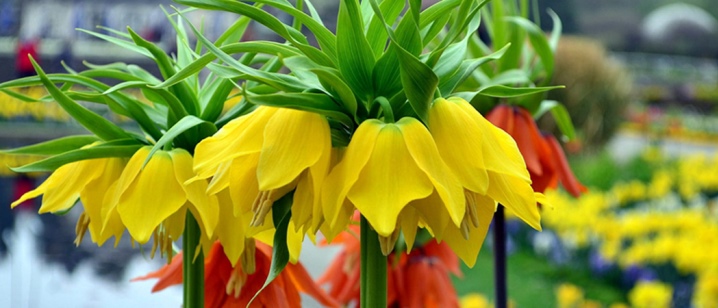
Grouse, fritillaria, royal crown - all these names refer to one plant, which is loved by the owners of backyard plots. This flower attracts with its unusual appearance and early flowering. Consider what you need to know about this plant in order to grow it on your site.
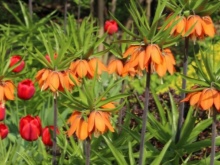
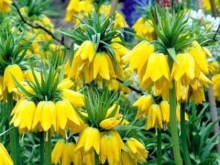

Description
Grouse is a perennial herb from the lily family. It is also called fritillaria. There are about 180 varieties of this flower, representatives of which are common in the temperate zone of the Northern Hemisphere, in the territory of East and West Asia.
This relative of lilies received its name because of its spectacular appearance. The shape of the whisk looks like a glass that is used to throw dice. This glass is called fritillus in Latin. Hence the original name of the flower appeared.
Grouse fritillaria began to be called because of its variegated flowering ("pockmarked" is "variegated" in the common people).
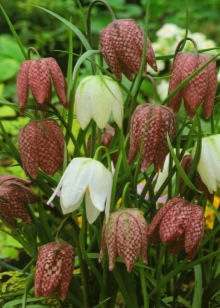
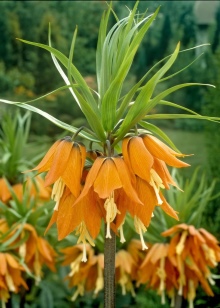
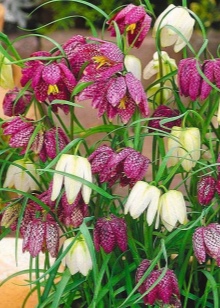
The root system of the plant is in the form of bulbs. They are without integuments, but they consist of soft scales, the number of which varies from 2 to 8. In the axils of the scales, buds can form, from which new bulbs will appear in the future. Renewal of the bulbs occurs annually. The replacement bulb appears inside the mother bulb.
In spring, a stem with narrow-linear or oblong-lanceolate leaves appears from the bulbs, which may have a whorled or scattered arrangement. The stem of the garden plant ends with one or more flowers collected in umbrellas. They are characterized by a bell-shaped or kubarevidny shape.
A wingless or winged seed capsule with 3 nests and 6 faces emerges from the flower. Inside, many flat-shaped seeds ripen.
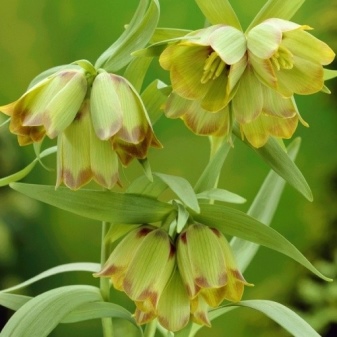
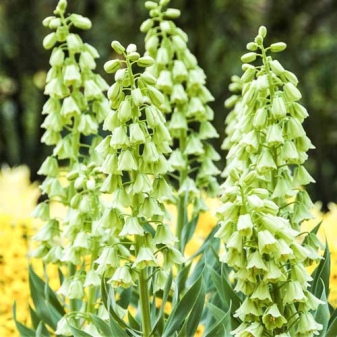
Varieties
Fritillaria is represented by 180 species, each of which is beautiful and unique. From this wealth, we have selected the most interesting and common ones.
- "Rubra Maxima" - this is the brightest representative, which amazes with its size (minimum bud length 5 cm) and bright orange flowering, in which even red notes can be traced. The height of this plant can exceed the 1 meter mark. The bulbs are characterized by high frost resistance - they do not die even at -30 degrees.
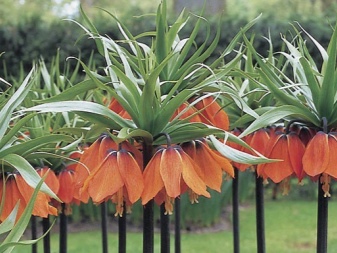

- Grouse Radde distributed in the wild in Central Asia. Its height can reach 80 cm. Wide, glossy leaves are painted in light green tones. During flowering, the plant produces large greenish flowers with yellowish veins. A spectacular spherical brush is formed from the flowers.

- Have a hazel grouse "Uva-vulpis" dark purple flowers have speckled spots, and a yellow stripe along the edge. This color combination makes Uva-Vulpis fritillaria expressive and unusual. Thin stems have no more than three flowers. This variety is actively propagating, it is unpretentious and can even be grown in pots.
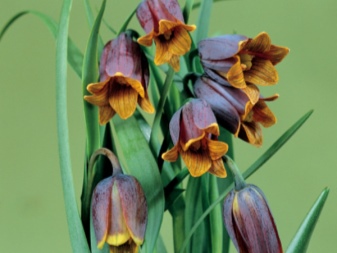
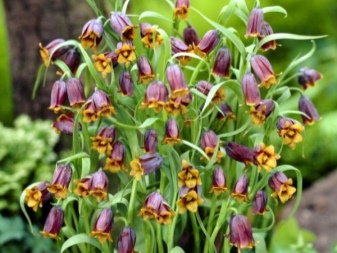
- "Garland Star" stands out with the largest flowers of all varieties. The strong stem is adorned with numerous orange flowers.
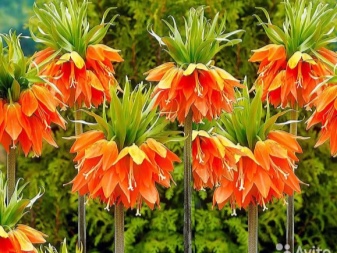
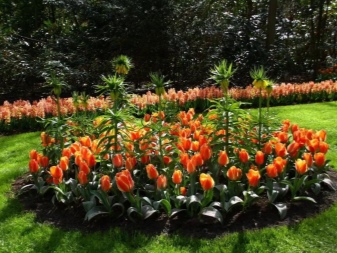
- For "Aurora" characteristic carrot buds, bright color with a length of up to 4 cm. The stem of this plant can reach one and a half meters, which is one of the highest rates among all varieties.
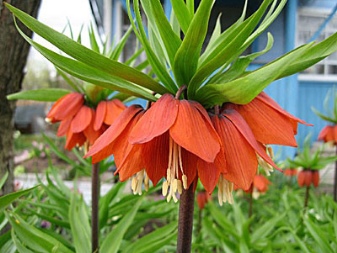
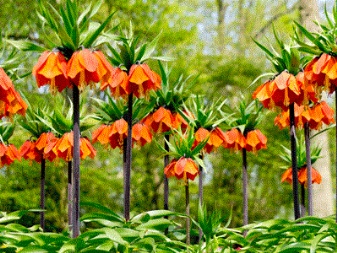
- Yellow hazel grouse "Lutea" characterized by bright sunny colors, which makes this variety the most expressive of all light varieties. The stem height reaches 1 meter. Flowering can be observed in early May.
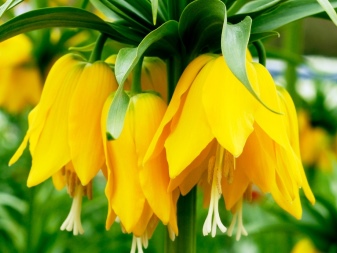

- Looks impressive hazel grouse peach or persian, which is called the funeral flower because of its appearance. And it seems to us that he is mysterious, not mourning. Its stem is densely covered with small purple flowers with a bluish tinge. The stem can be up to 1.1 meters in height.
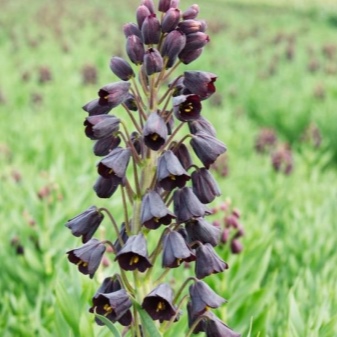
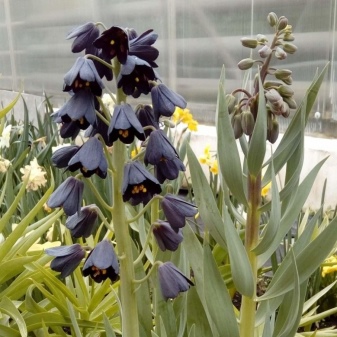
- "Meleagris Alba" is the most frost-resistant and one of the shortest, since its height does not exceed 30 cm. The plant stands out with snow-white flowers with green tan in the form of bells. This pale-flowered variety prefers to grow in the territory of Eastern Siberia and the Urals.

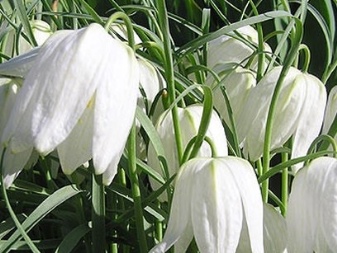
- Grouse Mikhailovsky - This is a cute plant with miniature size (height does not exceed 20 cm). Flowers attract attention with a catchy color, which consists of a burgundy background and golden edging. The plant does not have high frost resistance, therefore it can freeze out.
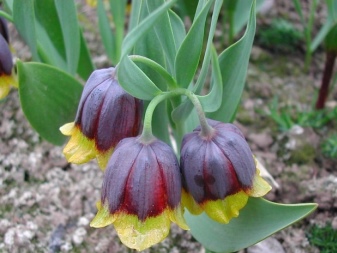

- Caucasian fritillaria It stands out for its small size and single purple flowers with a bluish bloom. It is an interesting species that is actively used in breeding.
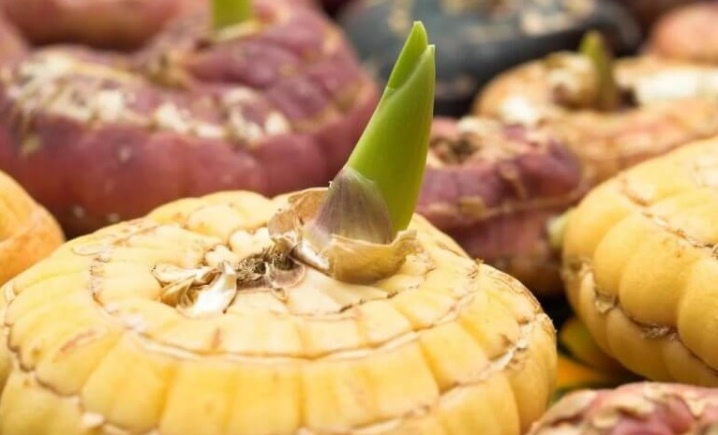
- Ussuri plant species can grow up to 60 cm, while the diameter of its bulbs does not exceed 1 cm. On a thin, bare stem are whorled, linear leaves with pointed edges. Their length does not exceed 15 cm. The shape of the flowers that appear in May is narrow-bell-shaped, the outer part of the petals is colored brown-violet, and the inner part is purple in color. The petals are highlighted with a yellow checkerboard pattern. The seed capsule is obovate and appears in June.
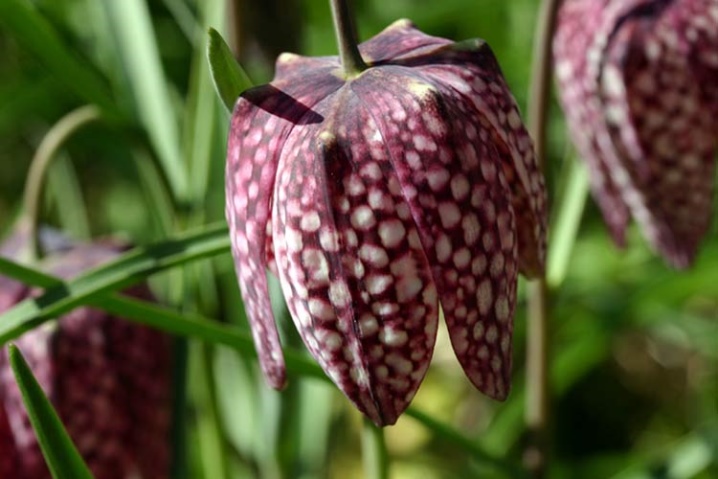
- Kamchatka hazel grouse in height it can reach 70 cm. Its bulb is white, has a rounded shape, its diameter does not exceed 5 cm. The serrated scales of the bulbs consist of small fragments, the shape of which resembles rice grains. Oval-lanceolate leaves with a bluish color in the lower part emerge from the bulb. Upon completion of flowering, they acquire a yellow color. In the period from May to June, up to 3 flowers with an unpleasant aroma appear on the stem.
They are bell-shaped or funnel-shaped and are black and purple in color, on which a checkerboard pattern is faintly visible. An oblong-oval box is formed from the flowers.
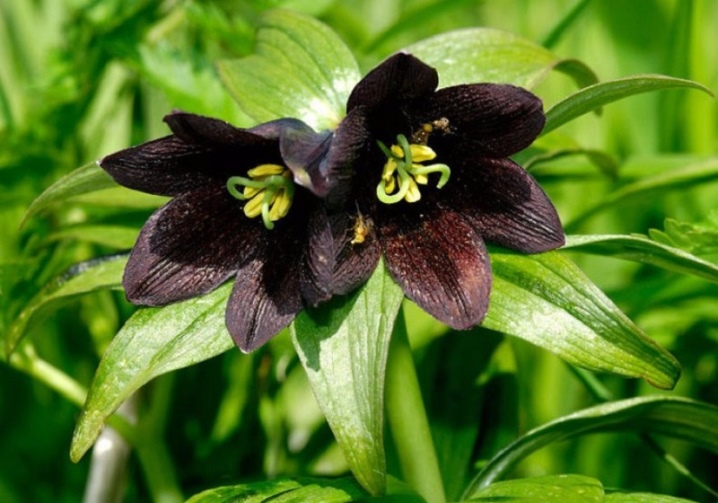
- Imperial hazel grouse "Stripe Beauty" It stands out with peach-colored buds with veins of a brick shade. The height of the plant is within 90 cm.
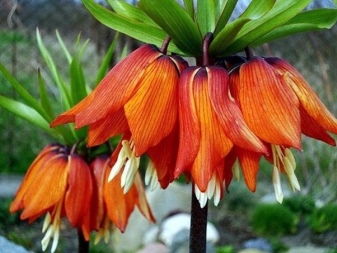
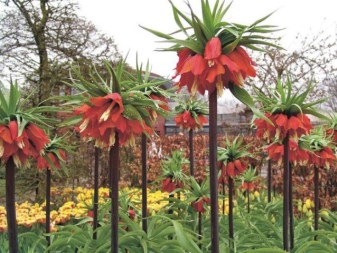
- Chess (Fritillaria meleagris L.) hazel grouse has a bulb in the form of an oblate ball with a brown membranous shell. Bulb sizes vary from 7 to 15 mm. The stem grows up to 35 cm in height, usually it has a smooth surface, in rare cases tubercles may appear. The upper part of the stem is decorated with successive leaves (from 2 to 6 pieces), which have a linear-lanceolate shape, tapering towards the ends. At the end of the stem, up to two drooping flowers appear. The perianth has a bell-shaped shape, it can reach 4 cm in length and 2.5 cm in width.
The petals are decorated with an expressive checkerboard pattern of dark purple color against a pink background. A triangular seed box is formed from the flowers. Flowering occurs in late spring or early summer, lasts no more than 3 weeks.
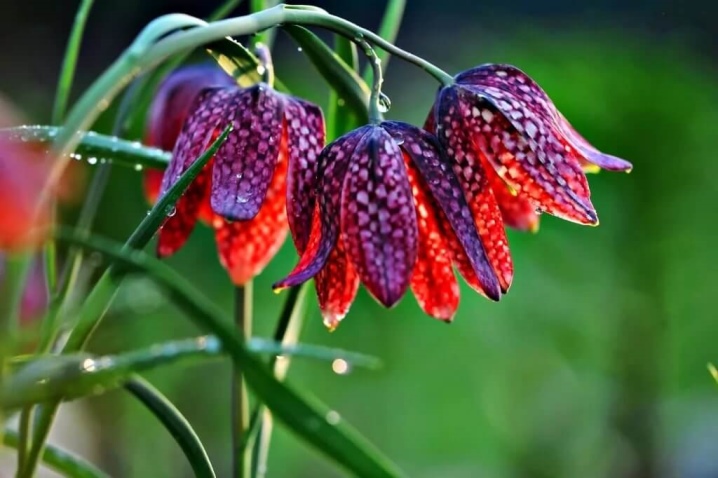
- Fritillaria Edward has many features similar to the imperial hazel grouse, but stand out in larger sizes - the height can reach up to 2 meters. Ball-shaped bulbs can weigh up to 1 kg. Dividing the bulb is a rare occurrence for this plant variety. Flowers are odorless, which is very rare for hazel grouses.
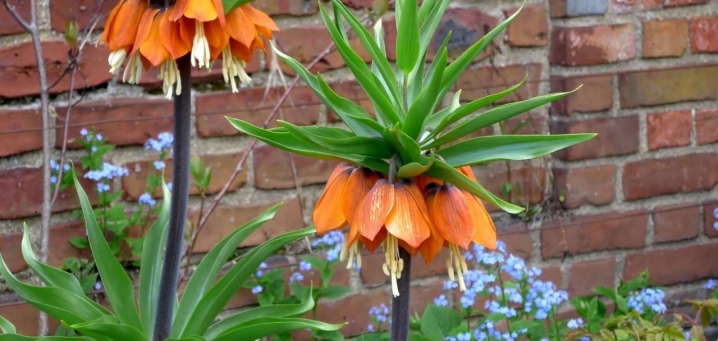
- Other varieties fritillaria are no less interesting and expressive. For example, hazel grouse Thunberg has white flowers, which are decorated with green veins on the outside, and brown dots on the inside.
Landing
Fritillaria is planted in open ground in autumn - in late August or early September. The plant will thrive in a sunny area, but partial shade is also suitable. Before planting, it is better to keep the bulbs in a solution of potassium permanganate, after which they must be thoroughly dried and treated with charcoal.
Grouse thrive in moderately moist, fertile, light soil with good drainage... The plant does not impose special requirements on the composition of the soil, but it is better to grow it in sandy loam soil with the addition of humus. Before planting, you need to prepare the site.
Preparation consists of digging up, removing weeds and adding humus, peat, wood ash or lime. Heavy soil is diluted with sand.
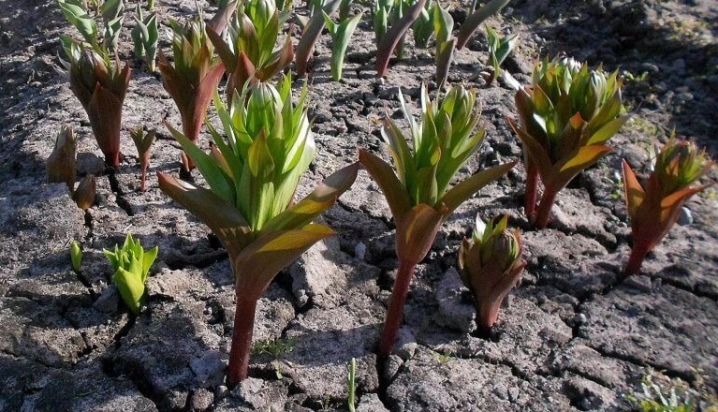
Landing is carried out in compliance with a number of simple rules:
- over the bulbs must lie a layer of soil, the height of which will be equal to their diameter multiplied by 2;
- small bulbs are arranged at a distance of about 12 cm, and between large ones there should be up to 30 cm of free space;
- the bottom of the hole is filled up coarse sand, which is replaced by peat in the case of heavy soil;
- each onion stacks on one side, in this case, you need to straighten its roots, but do not press it into the ground;
- bulbs covered with calcined sand, and soil is poured on top.
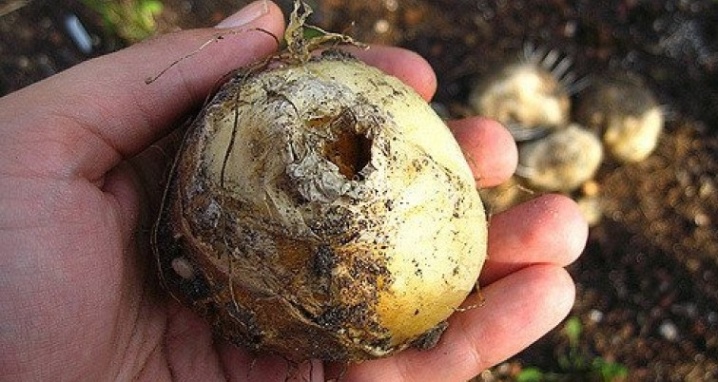
Subtleties of care
Although the hazel grouse is called the royal crown, but in care it is unpretentious and is not at all capricious. Some rules, of course, will have to be followed, but they are so simple that even a grower without experience will succeed.
- Watering is important for the plant, but you can't overdo it.... Abundant moisture will lead to the development of diseases and decay processes. The plant does not tolerate dry summers without additional watering. The soil should not be constantly wet. You just need to avoid strong drying out. After flowering, also do not forget about watering.
- Fertilizer is applied three times a year: from mid-April, after flowering and in autumn... Dry mixes show good results. But the ideal option is a combination of humus, complex fertilizers and nitrophosphate. The last feeding is done in the fall; it is better to prepare a mixture of superphosphate and potassium sulfate for it. When fertilizing, it is important not to overdo it. It is better not to report than to add too many useful ingredients.
- Weeding should be regular, it is best to do it after each watering.... Loosening the soil is not recommended, as there is a high probability of damage to the delicate bulbs. It is better to replace loosening with mulching of the site with peat or humus in a small amount. Such actions are best done after planting the plant.
- The transplant must be carried out at least once every 3 years. Such care will prevent the development of diseases. It is better to do this in the fall, when the plants have completely faded and are ready for wintering. During the transplanting process, the same rules are followed as when planting bulbs.
- Preparation for winter begins in summer, when the stems and leaves begin to turn yellow.... You should not wait for the complete withering away of the ground part of the plant. Already in the middle of summer, the bulbs can be prepared for winter. To do this, they need to be dug out, freed from dry scales, rinsed, held for half an hour in a weak solution of potassium permanganate. Places with manifestations of decay processes are removed, treatment with fungicides and wood ash is carried out.
At the end of summer, the roots can be seen on the bulbs, which will serve as a signal that the plant is ready for planting in the ground for the winter.
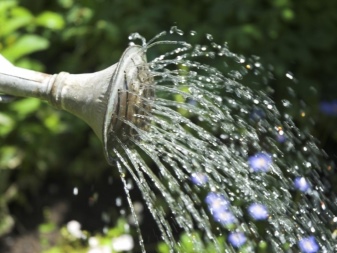
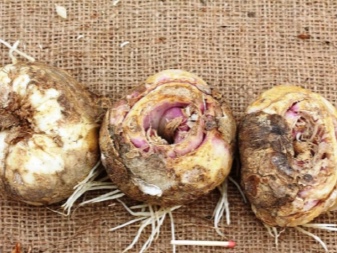
Growing problems
Despite the unpretentiousness and simple care, hazel grouses can upset their owner, for example, by the lack of flowering. This is not the only problem a florist can face.
- Cool or overly humid summers — these are not the best conditions for hazel grouses. The bulbs need help and try to warm them up naturally before planting. If signs of rotting appear on the bulbs, it is necessary to urgently remove all affected areas, treat them with potassium permanganate and charcoal.
- It is impossible to allow the plant to be in one place for a long time. - the bulbs are actively dividing, shrinking and may refuse to bloom. In this case, you should try to dig up the largest bulbs and plant them in the fall.
- Planting depth is important in the process of growing fritillaria... With insufficient depth, the plant reacts sharply to weather changes - it freezes from frost, and from high humidity it undergoes rotting processes. The great depth makes the bulbs spend a lot of energy to germinate.
- The hazel grouses do not impose special requirements on the composition of the soil, which cannot be said about drainage. On should be good, especially in conditions of high groundwater and high humidity. It is also better not to use too light soils due to their freezing. Clay soil is also not recommended as it absorbs a lot of moisture.
- Pests do not particularly like to feast on hazel grouses. But the onion rattle, also called the lily beetle, can bring a lot of problems. He is the main enemy of the plant. This pest is recognizable by its red body and black head. The greatest danger to the plant is posed by the pest larvae, which are located at the bottom of the leaves. To eliminate this danger, it is necessary to remove the larvae with a soapy sponge, and also treat the plant with fungicides.
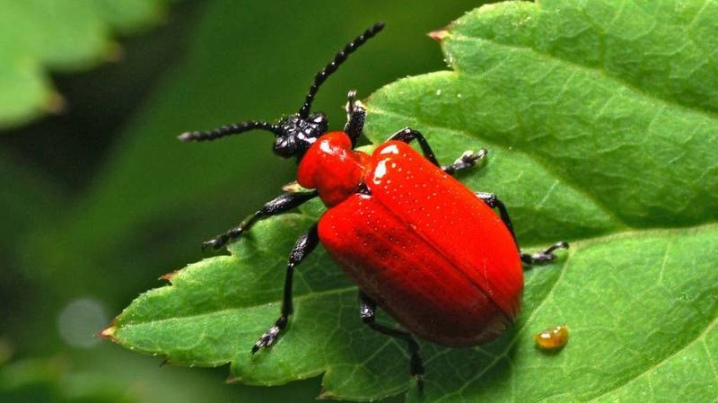
Reproduction methods
Among amateurs, a vegetative propagation method is practiced, in which the bulb divides independently. Usually, no more than two babies appear from one large onion, which can bloom only a few years after growing. This method may not be fast, but it is reliable and simple.
If the bulb is in no hurry to give "offspring", it can be helped in this. The essence of the method is as follows:
- after the summer digging, we select the largest and healthiest onion;
- on the fleshy part, a shallow scraping is made with a diameter of about 2 cm, for this procedure it is important to use a sterile instrument so that infection does not occur;
- the wound is not processed, but it should dry well in the sun;
- the bulb is placed in dry, clean sand, the container is stored in a room with good ventilation;
- closer to autumn, roots will begin to appear, which will indicate the readiness of the bulb for autumn planting in the ground;
- ovaries on this plant are removed, which will allow the plant to retain strength for reproduction;
- you need to dig the bulb at the usual time after the flowering of other hazel grouses, caution will not hurt here, since you can easily damage the baby.
It is extremely difficult to propagate fritillaria from seeds, because you need to follow a complex technique and create certain conditions for a long time.
This method is practiced only by professionals who are engaged in the cultivation of hazel grouses on an industrial scale.
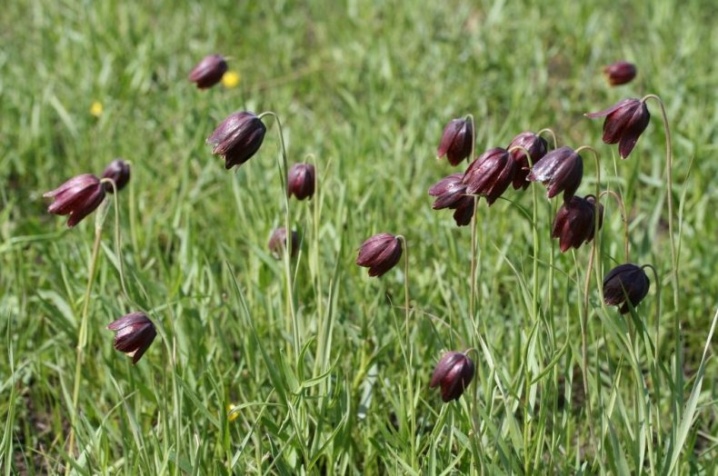
Use in landscape design
Grouse fits perfectly into different landscapes. With a skillful combination with other ornamental plants, you can create extraordinary compositions. And our advice will help you with that.
- Low grades just ask for alpine slides and rockeries.
- There is definitely a place for tall plants in the rock garden. They look no less impressive near artificial, decorative ponds.
- Small flower beds, created on the basis of a combination of hazel grouse and other bulbs, look spectacular and are able to refresh any flower garden.
- Fritillaria gathered in small groups, look good against the background of lawns. Such compositions can be placed in containers.
- When forming a flower bed, it is imperative to be guided by the flowering period of each participant in the composition. You can use long-flowering plants or create a flower bed in which some flowers will replace others.
- Great neighbors for hazel grouses tulips and daffodils, muscari and primroses, subulate phloxes and hyacinths appear.
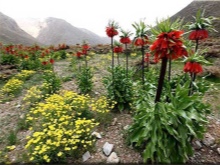
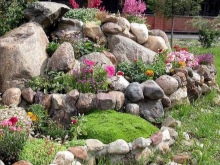
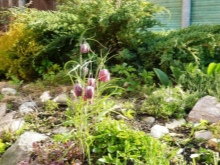
You can learn about why hazel grouses do not bloom from the following video.


































































































The comment was sent successfully.